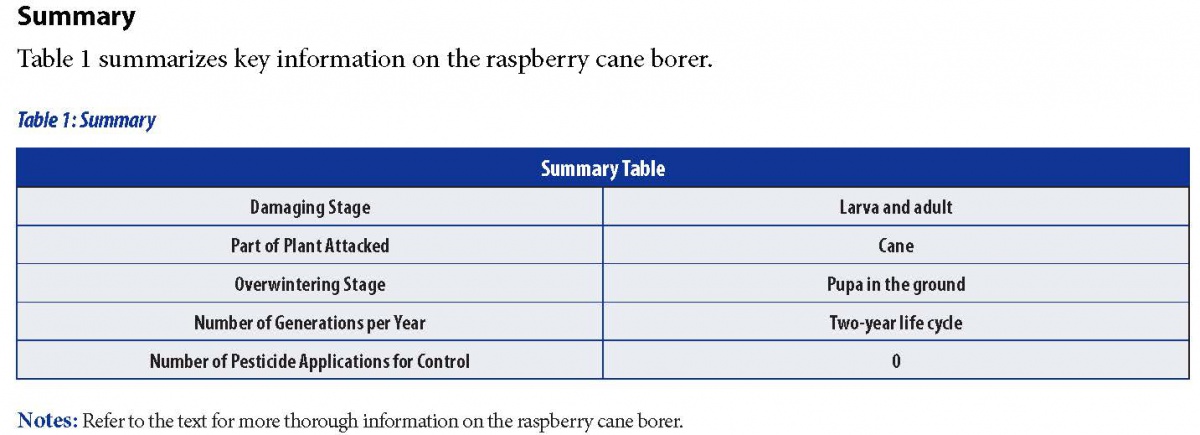Though damage from the raspberry cane borer (Oberea perspicillata) is often seen, the insect itself is rarely recognized as a pest. It usually causes only slight or occasional injury, although, when abundant, it can cause considerable damage. However, it is easy to control.
Description
The adult cane borer is a slender, black beetle with long, black antennae, a black head, a yellow prothorax, and a black body. Adults are about 1/2" long. The larvae are legless, light-colored borers found within stems. Fully grown larvae are about 3/4" long.
Life Cycle
This insect has a two-year life cycle. Adults start emerging in late June, and females lay eggs in the pith of new raspberry growth, about 6" from the tip of the cane. The female beetles then make two rows of punctures around the cane, one just above and one just below the egg-laying point. This causes the tip of the new cane to wilt. The eggs hatch in July and the larvae burrow slowly down the cane, passing the first winter within an inch or two of the girdle. During the second year, the larvae burrow down to the crown and pass the second winter at or below ground level. The larvae complete development the following spring and pupate in the soil.

the cane, one just above and one just below the egg-laying point.
Credit: Alan T. Eaton.
Management
IPM Strategies:
- Cultural Practices - Cut girdled canes about an inch below the girdle and burn them soon after cane borer damage appears. Attacked canes wilt, making the damage easy to spot. Eliminating wild raspberries nearby reduces damage. Since the life cycle of the raspberry cane borer requires two years to complete, regular pruning usually keeps the population in check.
- Chemical Control - Chemicals are not necessary to control this pest.


Stop! Read the label on every pesticide container each time before using the material. Pesticides must be applied only as directed on the label to be in compliance with the law. All pesticides listed in this publication are contingent upon continued registration. Contact the Division of Pesticide Control at (603) 271-3550 to check registration status. Dispose of empty containers safely, according to New Hampshire regulations.
Download the resource for the complete factsheet.

